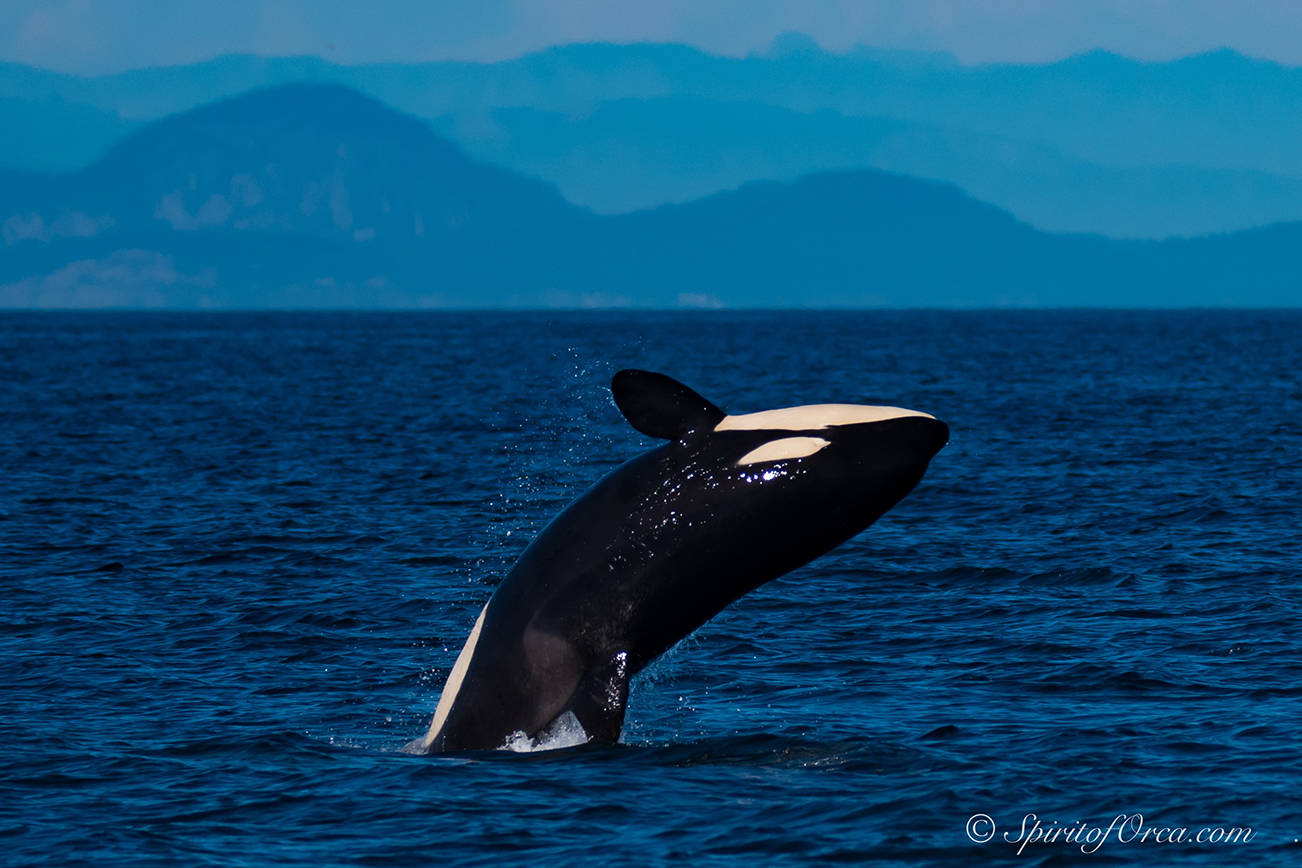Originally published by the Washington Department of Fish and Wildlife
The Washington Department of Fish and Wildlife announced on Dec. 21 new rules for commercial viewing of Southern resident killer whales to reduce the impacts of vessel noise and disturbance on the whales’ ability to forage, rest and socialize while enabling sustainable whale watching.
Prompted by the Legislature through Senate Bill 5577, the rules are expected to take effect in early 2021. The Washington Fish and Wildlife Commission approved the rules during its Dec. 18 meeting. The rules only restrict commercial viewing of SRKW and do not further restrict the viewing of Bigg’s killer whales, humpbacks, or other species of whales and marine mammals beyond regulations already in place.
“This process has highlighted the extensive community invested in the recovery of Southern resident killer whales,” WDFW Director Kelly Susewind said. “The adopted rules are an important part of a broader suite of efforts that the Department is continuing to pursue to help prevent the extinction of these animals while preserving an appropriate opportunity to admire them.”
The rules include a three-month, July-September season when commercial viewing of SRKW by motorized commercial whale-watching vessels may happen at closer than one-half nautical mile during two, two-hour periods daily (limit of three motorized commercial whale-watching vessels per group of SRKW).
The rules formalize the currently voluntary ‘no-go’ zone along the west side of San Juan Island to commercial whale-watching vessels year-round regardless of SRKW presence, allowing a 100-yard corridor for commercial kayak operations.
The rules also outline license application processes for commercial whale watching operators, reporting and training requirements including real-time reporting to the Whale Report Alert System, onboard geo-locating software requirements, and rules for commercial kayak tours viewing SRKWs. Licenses will be required for commercial whale-watching operations starting March 1, and reporting requirements will go into effect May 1, 2021.
The Commission is working on a policy statement about SRKW recovery and additional whale watching recommendations for commercial and private vessels.
Throughout 2020, WDFW staff received input from its Commercial Whale Watching Licensing Program Advisory Committee as well as an intergovernmental coordination group and an independent science panel. In addition to the State Environmental Policy Act process, the rules were also informed by reports summarizing the science and analyzing economic impacts on small businesses. The Commission also received input from more than 4,000 commenters on the draft rules.
To view the rules, best available science report, economic analysis, environmental review and other details, visit WDFW’s commercial whale-watching rulemaking webpage at wdfw.wa.gov/species-habitats/at-risk/species-recovery/orca/rule-making.
As requested by Senate Bill 5577, WDFW will review the effectiveness of the commercial whale watching and broader vessel rules and produce a report every two years (November 2022, 2024, and 2026) with recommendations for potential modifications. The legislation defines commercial whale watching as the act of taking, or offering to take, passengers aboard a vessel in order to view marine mammals in their natural habitat for a fee. The regulations apply to operators of commercial vessels and kayak rentals who take part in the business of commercial whale watching.
The department reminds recreational boaters to continue to follow new killer whale viewing regulations, which Gov. Jay Inslee signed into law last year, requiring vessels to stay at least 300 yards from Southern Resident killer whales and at least 400 yards out of their path or behind the whales. Vessels must also reduce their speed to seven knots within a half-mile of a Southern resident killer whale.
“We all have a crucial role in helping to give these whales the best chance at survival,” said Julie Watson, WDFW killer whale policy lead. “We encourage recreational boaters to take steps as well to support Southern Resident killer whale recovery, including going slow and giving these whales extra space.”
Boaters are encouraged to watch for the Whale Warning Flag, an optional tool from the San Juan County Marine Resources Committee, that lets others know that there might be whales nearby. If you see the flag, slow down and follow guidelines. Recreational boaters are encouraged to visit BeWhaleWise.org.




